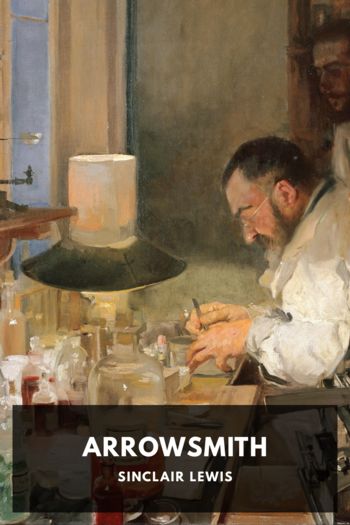Holocaust: The Nazi Persecution and Murder of the Jews, Peter Longerich [essential books to read TXT] 📗

- Author: Peter Longerich
Book online «Holocaust: The Nazi Persecution and Murder of the Jews, Peter Longerich [essential books to read TXT] 📗». Author Peter Longerich
cussed in the literature. 74 Here we will merely attempt to provide an overview of Jewish self-organization under the immediate pressure of persecution and locate
that self-organization within the history of Judenpolitik.
The economic consequences of the increasing ‘creeping’ exclusion of many
Jews from the economy, which set in at the end of 1936 after the ‘boycott’ had
already considerably undermined their economic situation, were particularly
grave. The considerable reduction of economic possibilities as a consequence of
exclusion now led to characteristic relocations of Jewish economic activity, for
example to their heightened activity as salespeople (until that profession came
under greater pressure from the authorities late in 1937), or the relocation of
businesses to homes and thus to typical poverty careers. 75
Through the discriminatory measures in the economic field something like an
autonomous Jewish business cycle came into being: Jews were increasingly forced
to fall back on Jews as suppliers and customers, although that Jewish ‘internal
economy’ did not offer sufficient opportunities to make a livelihood; most busi-
nesses lived on their capital. 76 A closed Jewish labour market was supported by a Jewish labour exchange until it was closed down late in 1936. It was characteristic
of the Jewish commercial sector that the amount of credit provided by loan offices
increased steadily until 1936, while the activity of the agency that was supposed to
help with the reconstruction of livelihoods declined, since fewer and fewer Jews
wanted to engage in businesses. 77
Under the increasing pressure of exclusion on the one hand, and impelled by
Jewish attempts at self-assertion and self-organization on the other, an ‘autonomous
Jewish sector’ came into being, and not only in the commercial world, which
Interim Conclusions
87
facilitated survival for those Jews who had remained in Germany and gave them one
last means of support before complete impoverishment. As a result of segregation
something like a Jewish ‘public service’ came into being: Jewish health and educa-
tion, Jewish welfare, and social security78 reached a considerable size; a considerable administrative apparatus was maintained in the Jewish communities and in organizations such as the Central Committee and the Reich Board. The establishment of
Jewish institutions and the exclusion of Jews from the institutions accessible to the
general population occurred as a complementary process.
In 1935–6 the Reich Board of Deputies of the Jews in Germany (originally
founded, as an umbrella organization, as the Reich Board of Deputies of German
Jews, it had been obliged to assume this new name after the introduction of the
Nuremberg Laws in 1935) began to develop more collective places of education. 79
While it transpired that the redistribution of adults did not increase chances of
emigration to any significant extent, after 1935–6 these institutions undertook
above all the initial training of young Jewish people who were unable find an
apprenticeship, or whose training in the commercial professions preferred by Jews
seemed pointless.
By 1938 some 30,000 people had been trained in training farms and training
centres, two-thirds of them younger than 20. These included a considerable
number of young people who were able to train in agricultural professions outside
Germany. About 15 per cent of young people between 14 and 25 had thus been
covered by the educational measures by 1938.80
Finally, the construction of an autonomous Jewish cultural life made further
progress. 81 Alongside a sizeable Jewish press82 this found expression above all in the establishment of Jewish cultural organizations. March 1935 saw the foundation
of the Reich Association of Jewish Cultural Societies in Germany, under the
supervision of the Propaganda Ministry. With the appointment of Hans Hinkel,
the Commissar in the Prussian Ministry of Culture originally commissioned to
undertake the ‘Entjudung of cultural life’, as ‘Special Agent for the Cultural
Activity of all Non-Aryans’ in this ministry in July 1935, and through its simul-
taneous function as one of the managers of the Reich Chamber of Culture, a close
connection was established between the Entjudung of the general cultural indus-
try, and the construction of an autonomous Jewish culture was produced. From
August 1935 cultural associations had to become members of the Reich Associ-
ation, which thus became something resembling a Jewish Chamber of Culture. All
programmes of cultural events now needed—after being presented to the Reich
Association—permission from the Hinkel Office; organizers, performing artists,
and audiences had to be members of the Reich Association. In 1938 there were a
total of 76 cultural associations, involving about 50,000 people. The creation of an
efficient Jewish cultural organization was—and this connection should not be
overlooked—one of the preconditions for the exclusion of the Jews from the
general cultural life.
88
Racial Persecution, 1933–1939
The Jewish school system was considerably expanded under the pressure of
persecution. At the start of the Nazi era only around 25 per cent of Jewish primary
schoolchildren attended Jewish schools, about half each in private and public
schools. During the 1930s the following developments can be observed: the
number of Jewish primary schoolchildren declined overall, due to emigration
and the falling birth rate, while an ever greater proportion of Jewish schoolchil-
dren left general primary schools. The result of these movements in the Jewish
student body for the Jewish public schools was a steady loss of pupils; the number
of these establishments, most of which had been barely sustainable one-room
schools even before 1933, thus declined from 148 in 1932–3 to 76 in 1937. 83
The private Jewish primary schools, on the other hand, registered a constant
increase in pupil numbers, at least until 1938; later the figures fell again. The
number of these schools rose between 1933 and 1937 from twenty-seven to seventy-
two. 84 The number of pupils at the public secondary schools—ten schools in all—
increased slightly until 1937, while the role of the private Jewish secondary schools
remained insignifant. 85
In 1934 the Reich Board drew up guidelines for education in Jewish primary
schools, which were understood as a complement to the state curricula which were
also valid for the Jewish schools, and which effectively represented a compromise
between German-Jewish, Orthodox, and Zionist educational goals. 86 In 1937 the Reich Board issued new guidelines which took into account the altered outlook for
those Jews still living in Germany: unlike 1934, the emphasis was no longer on the
rootedness of Jewish culture in the German environment; instead the pupils’
orientation towards Jewish tradition and preparation for emigration, especially
to Palestine, 87 found expression, for example, in a larger amount of Hebrew education, a greater emphasis on sport and handicraft,





Comments (0)